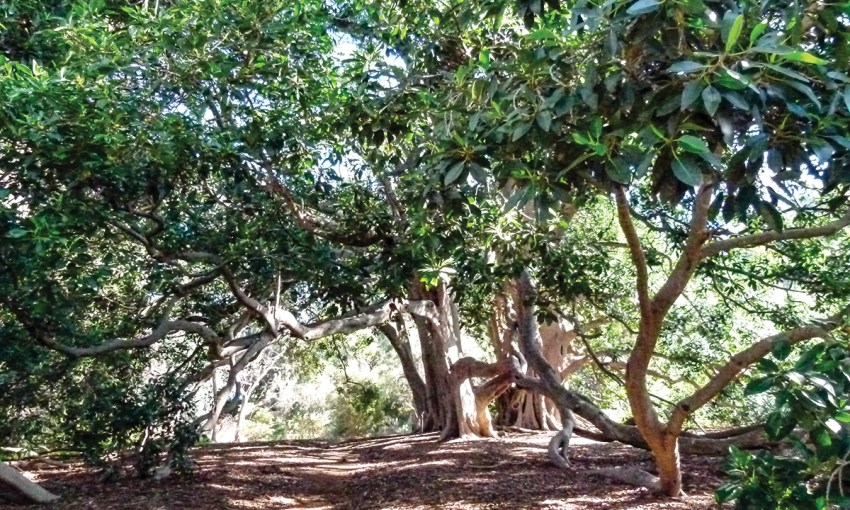Every time you walk around the Adelaide Botanic Garden, you are surrounded by myriad plants from all corners of the globe. The “Living Collections” represent 128 different countries and many of these living plants are trees, which stand gracefully above you.
Six Australian trees to get you thinking
While many are exotic, we have selected six specimens that are all Australian. Grab a Botanic Garden map available at each entry gate and challenge yourself to find each of these trees and learn more about our living collections here in the heart of Adelaide.
Ficus brachypoda the Desert Fig, found in the middle of the Mallee (K12 on brochure map). This remarkable tangled fig creates an amazing atmosphere with a unique sense of place. It is found in the dry centre of Australia – Queensland, Northern Territory, Western Australia and northern SA – where its trunks spread over rocks. The pubescent woody growths support glossy dark green leaves. Very much a part of the refugia flora, which is a legacy of our flora’s tropical past. It is known as a bush-tucker plant thanks to its supplies of deep red and sweet figs, which are a delicious treat to those wandering through those warm and arid lands.
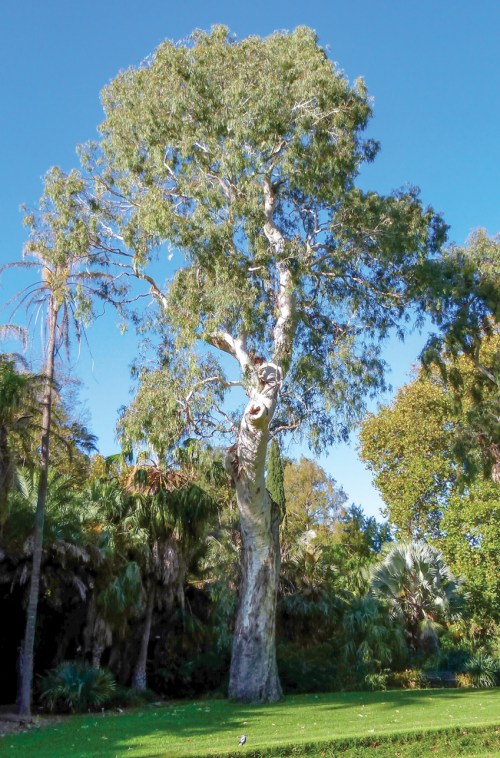
Eucalyptus camaldulensis the Karra or River Red Gum, is found between First Creek and the Northern Palm Collection (B6 on brochure map). Unfortunately, there are only two remnant vegetation plantings left in the Garden, from when it opened in 1857. These are both River Red Gums, which would have graced the site then and still do today. The magnificent tree I am highlighting is well over 300 years old and has gained its life-supporting water from First Creek, which it stands proudly beside. This is one of Australia’s iconic trees because it is found in all the mainland states and territories. It doesn’t take much imagination to think about the cultural changes and significant happenings this tree has witnessed over its life.
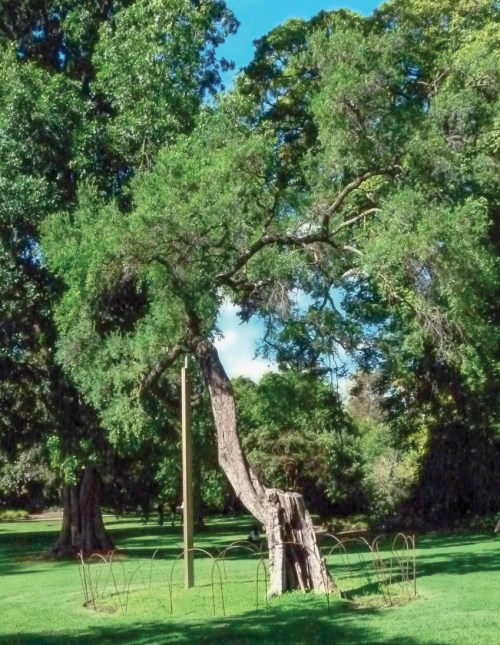
Bursaria spinosa the Christmas Bush, found north-west of the Summer House (J7 on brochure map). This old, gnarled specimen was one of the initial plantings in the Garden to illustrate the Australian flora around 1860. Over the years, it has grown far larger than it would in the natural South Australian bush. As its common name states, it flowers near to Christmas time. As you will notice it has lost some of its branches but care has been provided for it with a crutch to assist and support its survival for many years to come.
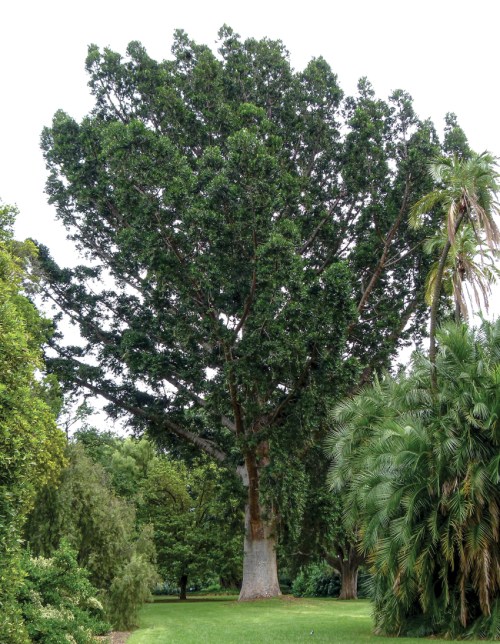
Agathis robusta the Queensland Kari Pine, found south of the Summer House (K8 on brochure map). By far the largest tree by mass in the Botanic Garden, exceeding 25 metres in height with branches that could be trees in their own right. Its girth is also amazing: if people were to join hands standing on the immense mound of grass at its base (caused by the underground roots) it would take five of them to embrace the 8.5 metre diameter at arm height. While many of the trees selected in this article are from all over Australia, this species is only found in Queensland and no other state. Its wood is easy to work in many ways and can be finished to a beautiful glossy surface.
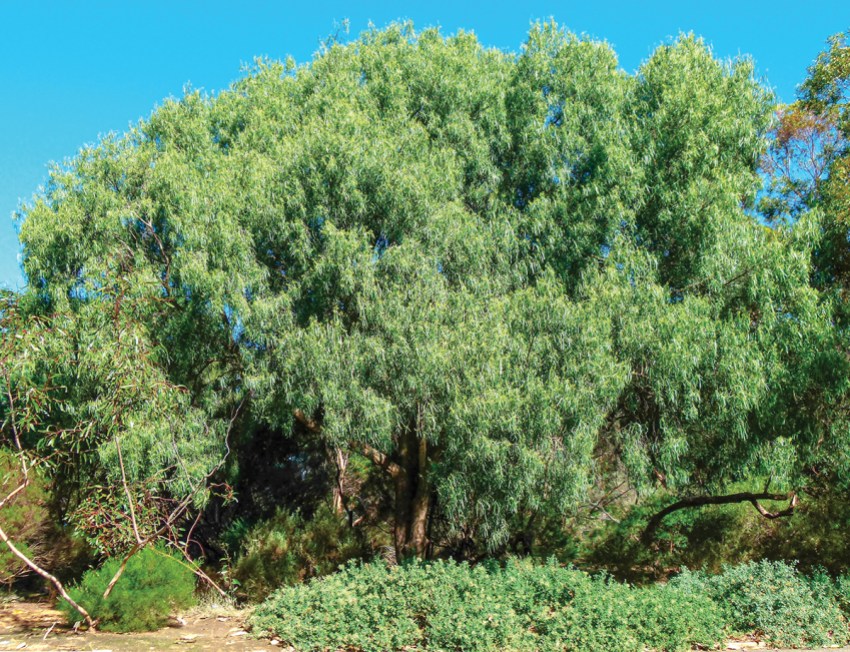
Geijera parviflora the Wilga, located north-east of the Mallee near to the Eremophila Collection (J13 on brochure map). Found in all the arid lands of the eastern states and SA where it can survive and flourish, this tree is becoming more common in the streetscapes of Adelaide and other urban areas. It can survive on various soils as well as extremely dry periods along with cold snaps and frost. Its graceful habit provides a small tree, which is suitable for planting under power lines within the city, while its green foliage provides excellent shade and the abundant white flowers attract birds, butterflies, bees and provides nectar for a strong-flavoured dark amber honey.
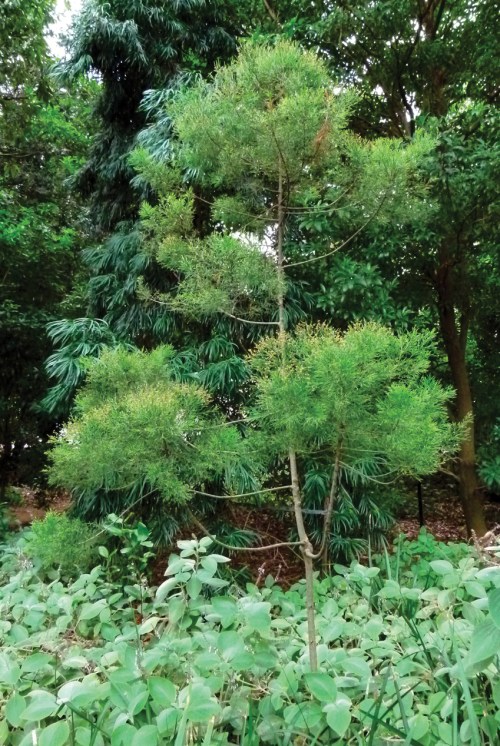
Gymnostoma australianum the Daintree Pine, is just to the righthand side as you cross First Creek from the Simpson House Lawn in an easterly direction (E11 on brochure map). This very primitive tree is the smallest – but by no means the least important – of this tour. In fact, it is a very vulnerable species growing in a small area of Australia, the Daintree, found from sea level to 1350 metres. It is usually found near creeks and waterways, occupying the sunny gaps among larger trees, but will never reach above seven metres in height itself. To confuse us even more it is not actually a pine, but a flowering plant in the she-oak family Casuarinaceae, and has independent male and female flowers on each plant.
Spend some time meandering through the Adelaide Botanic Garden and try to spot all of these magnificent Australian trees among a plethora of other spectacular specimens.
This article first appeared in the Winter 2023 issue of SALIFE Gardens & Outdoor Living magazine.



